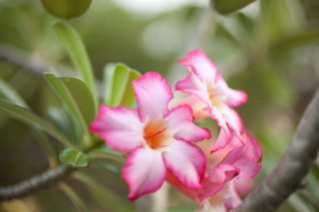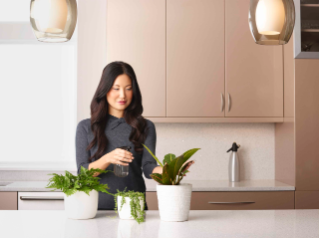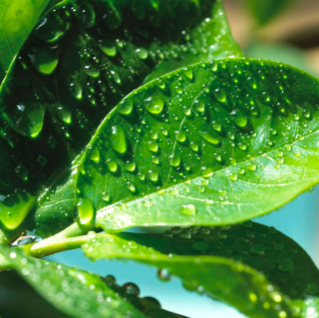The prolonged duration of staying at home has prompted many to transform their balconies or rooftops into mini gardens. Aside from being a worthwhile pastime and stress reliever, urban farming can also bolster a family's food security. If you are thinking of starting your own garden, read on to pick up some useful urban garden ideas.
What is Urban Gardening?

This pertains to the act of growing and caring for plants in cities, where open spaces for growing crops are rare. Filipinos often use their balconies and yards to create a garden. Due to the limited space, container gardening is very common. People use all kinds of containers like pails, pots, and even soda bottles.
Consider Sun Exposure
Since various plants require different levels of sun exposure, it is best to determine how much sunlight your garden gets before getting seeds. If your space gets 6 or more hours of daylight every day, you have access to full sun. It doesn't have to be continuous - it is okay to get more sun in the morning than in the afternoon. As long as you get a total of 6 hours per day, it's still considered full sun.
The same goes for the other categories. If the area gets 4 to 6 hours of sun each day, that is partial sun. If it is only 2 to 4 hours of sunlight daily, your garden receives partial shade, and finally, if the space gets less than 2 hours of daylight per day, it is shade.
Once you have determined the area's sun exposure, this information will help you decide which plants to grow. Hosta and begonias do well in partial to full shade, lettuce thrives in partial sun, while rosemary and santan prefer full sun.
Container-friendly Edibles

Growing your own food is one of the benefits of urban gardening. However, since most Filipinos who engage in urban farming have a small space, you will need to identify plants that do well in containers. If you are still looking for ideas, check out this list.
- Basil - This lovely-smelling herb can be grown in a planter or a window box. It prefers full sun and needs lots of moisture. But remember to water the soil and not the herb itself as it is prone to mildew. If you are in the mood for cooking, basil is perfect for salad dressing and making pesto sauce.
- Chili Peppers - You will need a plant box or a huge pot for this one. It requires full sun, regular watering, and good drainage. When a storm approaches or the rainy season begins, bring the plant indoors to prevent it from getting soaked. You can use peppers to spice up your dishes and dipping sauce.
- Sage - This tasty herb can handle dry to mediumly moist soil. But you will have to prune it every now and then, so it does not become too woody. As for daylight needs, it thrives under full sun to partial shade. You can incorporate sage into your pasta and chicken recipes.
Go Vertical
Do you want to build a balcony garden but have a tiny space? No problem. You can line the walls with shelves to make room for more leafy friends. Putting up some hanging baskets is another option. Doing this will avoid overcrowding and create the illusion of height, which will make the balcony seem bigger.
Leave Enough Room
Take the size of the container into consideration. It must be large enough to accommodate for the plant's growth. To make sure, inquire from the seller or your local nursery about how much soil is needed. For instance, tomatoes can be grown in pots and planters, but you will need one with at least a 19-liter capacity.
Go Easy on the Water

When watering plants, just use an amount that the soil can hold. If there are none, make some drainage holes on your plant containers to avoid too much water retention. Then, put saucers beneath the pots to make room for excess water. Regularly throw away the extra liquid that pools underneath to prevent root rot.
To find out whether overwatering has caused a plant to wilt, carefully lift it from the pot and inspect its roots. If the roots are slimy, soft, and brown, root rot has taken hold. If some roots are still healthy and firm, replant in a container with better drainage and water it less.
Learn About Fertilizer
Plants absorb nutrients from the soil to nourish themselves. Therefore, you need to replace what was taken to ensure good health. The key ingredients of most fertilizers are Nitrogen, Phosphorus, and Potassium (NPK). Each component has its job.
Nitrogen is essential in protein production, which is necessary to create tissues. It is also responsible for the creation of chlorophyll, the substance that gives plants their green pigment, and supports leaf development. Lack of nitrogen can cause leaves to turn yellow.
On the other hand, phosphorus encourages root growth and boosts the size of seeds. It is also needed for energy storage and aids in photosynthesis. Meanwhile, potassium makes plants less susceptible to disease and weather damage by enhancing the root system.
If you need an effective fertilizer, take a look at Nutriplant™ N-P-K+. Your plants need to receive ample amounts of nitrogen, phosphorus, and potassium to support important processes like fruit ripening and flowering. This product is completely water-soluble and can therefore be absorbed faster. Thus, it makes nutrient intake through the roots more efficient as well.
Use 100ml of NutriplantTM N-P-K+ for a 16-liter area of soil. As for storage, it should not be stored in direct sunlight. It is also not advisable to reuse the container once the fertilizer has run out. Lastly, it should be kept separate from water and food.
Growing food and ornamental plants on your balcony are now possible thanks to the rise of container gardening. Now even people living in apartments can experience the joy of being a plantito or plantita.
